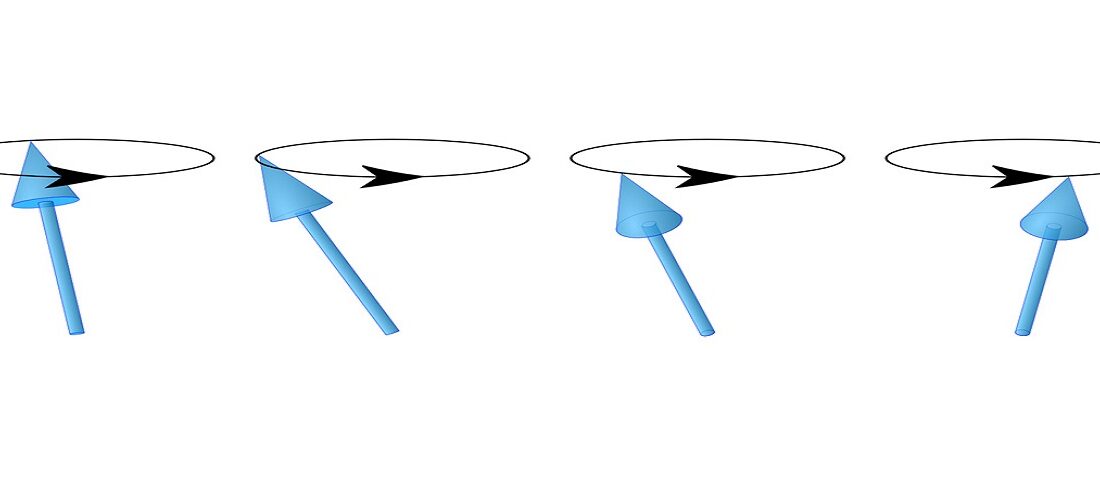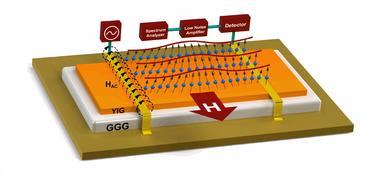
Magnonic thermal loss-less devices can enable smaller electronics in the future
- Posted by doEEEt Media Group
- On March 26, 2021
- 0
Electronic devices such as transistors are getting smaller and will soon hit the limits of conventional performance based on electrical currents. Devices based on magnonic currents — quasi-particles associated with waves of magnetization, or spin waves, in certain magnetic materials — would transform the industry, though scientists need to better understand how to control them.
All existing electronics are based on conductors of electricity such as metals or semiconductors. As electrons move through these materials, they experience scattering, which results in electrical resistance, heating, and energy dissipation. When current passes through a wire or semiconductor, the inevitable heating causes energy loss. Smaller devices and chips with a higher density of transistors accelerate the loss of energy due to heating. Devices using conventional electronic currents are almost at the point where they can’t be made any smaller.
Engineers at the University of California, Riverside, have made an important step toward the development of practical magnonic devices by studying, for the first time, the level of noise associated with propagation of magnon current.
Noise, or fluctuations in a current’s flow, is an important metric in gauging whether an electronic device is suitable for practical applications. Because noise interferes with a device’s performance, a better understanding of how noisy magnons are will help engineers develop better devices.
A new class of materials possess magnetic properties that originate from spin, a type of innate momentum. Individual “chunks,” or units of spin waves, are called magnons. Magnons are not true particles like electrons, but they behave like particles and can be treated as such.
A ripple of energy called a spin wave can move through an electrically insulating material to transmit energy without moving any electrons — like people doing the wave in a stadium. This means that magnons can propagate without generating much heat and losing much energy.
A new field of electronics called magnonics attempts to create devices for information processing and storage, as well as sensory applications, using currents of magnons instead of electrons. While electron noise has been known for a long time, no one has investigated magnon noise — until now.
A chip that generates a magnonic current, or spin wave, between transmitting and receiving antennae. Credit: Balandin Lab
A team led by Alexander Balandin, a distinguished professor of electrical and computer engineering in UC Riverside’s Marlan and Rosemary Bourns College of Engineering, created a chip that generated a magnonic current, or spin wave, between transmitting and receiving antennae.
Experiments revealed that magnons are not that noisy at low-power levels. But at high-power levels, the noise became unusual, dominated by broad fluctuations researchers called random telegraph signal noise that would interfere with a device’s performance. The noise was noticeably different from that made by electrons and identifies limitations on how to build magnonic devices.
“Magnonic devices should be preferably operating with low-power levels,” Balandin said. “One can say that the noise of magnons is discreet at low power but becomes high and discrete at a certain threshold of power. This constitutes the discreet charm of the magnonic devices. Our results also tell us possible strategies for keeping the noise level low.”
Would the discovery of unusual noise characteristics inhibit development of magnonic devices?
“No, the goal for information processing is to go to low power,” Balandin said.
For now, Balandin’s research group is conducting experiments with generic components in order to understand the fundamentals. Their first experimental devices are relatively large. They plan to investigate the physical mechanisms of magnon noise and test a substantially downscaled version of such devices.
The paper, “The discrete noise of magnons,” is a feature story in Applied Physics Letters, and will also appear on the cover of an upcoming issue. In addition to Balandin, the authors are Sergey Rumyantsev, Mykhaylo Balinskyy, Fariborz Kargar, and Alexander Khitun.
The work was supported as part of Spins and Heat in Nanoscale Electronic Systems, an Energy Frontier Research Center at UC Riverside funded by the U.S. Department of Energy, Office of Science, Basic Energy Sciences.
Source: UCR University of California news
Header photo credit: Illustration of ferromagnetic magnons by Jens Böning on Wikimedia Commons
- Space-Grade components available for immediate delivery - April 10, 2025
- Exclusive stock on doEEEt: How to access and request - April 10, 2025
- Managing EEE components for LEO and lower cost space missions - December 17, 2024



0 comments on Magnonic thermal loss-less devices can enable smaller electronics in the future